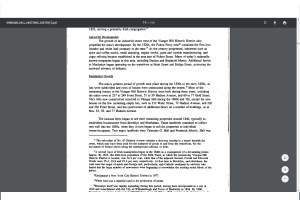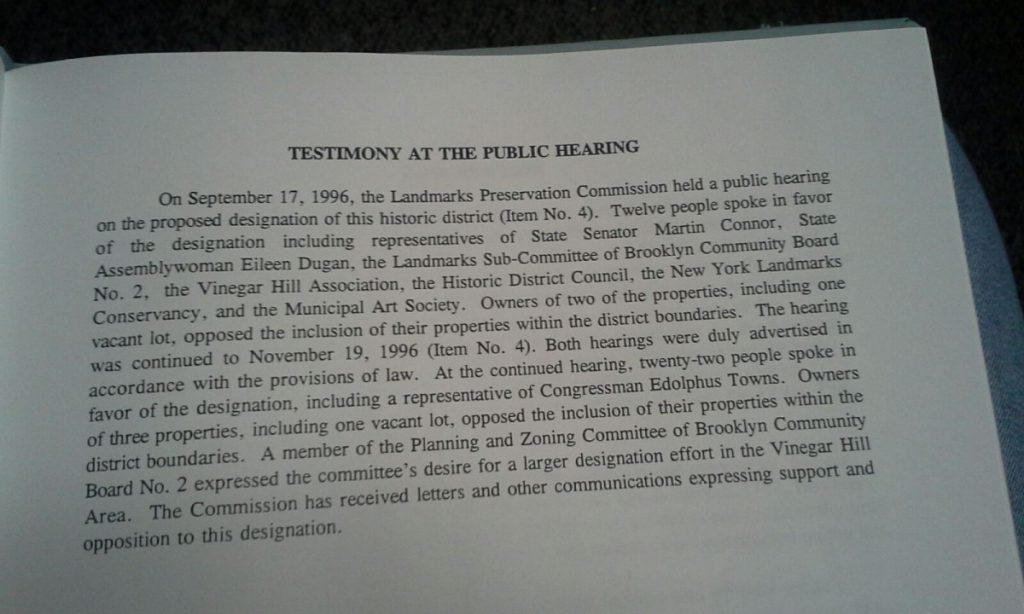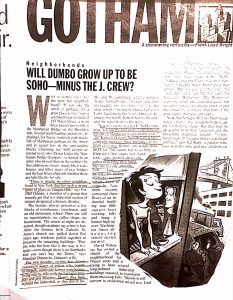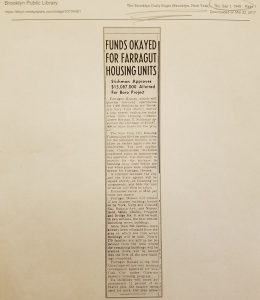Monthly Archives: April 2017
Javier A Zavaleta – Blog 2
Section in the Designation Report that talks about industrial and residential growth in the area of Vinegar Hill. The reason I choose this was because it’s related to the hypothesis of my focus. What my focus was reading is how can Vinegar Hill repeat and emulate that grow to a much larger scale today in 2017. I see that back then there was a beginning of iron company which was one of the first, it included spice, coffee works, metal stamping , engine works, pain and varnish manufacturing. So from this I concluded that back at the time it seemed like the focus was to grow this area with some new cutting edge factories, which not only brought business and customers but it brought new jobs. From this I concluded that there a lot things that just haven’t been done in vinegar hill in order to justify it’s growth. It’s up to many in that area to see this report and try emulate success if they want this area of Brooklyn to strive again.
ARCH 2205ID_Lana_Belopukhova_SiteReport#4
site report 4 – Mohammad Rasouly
Site Report 4 – Mohammad Rasouly Site Report 4 – Mohammad Rasouly
Blog 2 Stacey Battice
The key to this proposal clearly shows that having Vinegar Hill designated as a Historic District is in the interest of others and not the residents. This was back in 1996 and to date in the 20th century no decision has been made with regards to this proposed idea. Imagine it took persons from congress, members from the planning and zoning committee of Brooklyn Community and the Landmarks Preservation Commission to engaged in a public hearings and residents continue to opposed to this designation. I feel that the residents of Vinegar Hill do not want the interference of any outsiders and wants Vinegar Hill to remain the quiet town of Brooklyn. However, I truly believe that it is important to maintain and preserve Vinegar Hill, thus encouraging new developments just like DUMBO and SOHO in Manhattan who shared same similarities.
http://www.nyc.gov/html/lpc/downloads/pdf/reports/VINEGAR_HILL_HISTORIC_DISTRICT.pdf
Blog #2: NY Historical Society
During our visit at the New York Historical Society, I came across an article that is related to Dumbo and how one day it can possibly be turned into SoHo. A neighborhood that is located in lower manhattan, its known for being the location of many artists’ lofts and art galleries, but is well known for its variety of shops ranging from trendy upscale boutiques to national and international chain store outlets. It seemed pretty interesting to see this topic be talked about due to a neighborhood based on facts which has its ups & downs but also touch upon subject of wether or not this particular neighborhood could in someway benefit or not if in the future it will turn into something like Soho.
Blog_Post_2_Thein_Moe
During our visit, we found most of our information on Farragut Houses from the old newspaper articles which was presented there. We found the information on the cost of the housing, how many families that they were planning to locate there and how many families and small businesses had to move out of the area to make this happen. It also presents the information about why the housing was planned, which is to solve the borough’s acute housing shortage. It made me rethink the reason behind why the housing was built which I first thought to be make the neighborhood cleaner and denser per square feet and to create more open land only. Now I can see that they also did try to reduce the housing shortage of the borough. It is good to see that they had a vision to improve the community.
Inkary M.-Site Report Brooklyn Library #3
Pedro Torres Spring 2017 Blog Post #2
I found this article that was written by The Brooklyn Daily Eagle on September 1, 1949. The article is about the Farragut Housing Low Income housing. I find it interesting that 15 million dollars was placed on this “Boro Project”. Although it seems like a huge investment I wonder who was for the benefit for? The residents? Brooklyn? The government? No one? I remember in class we saw a documentary of similar low income housing in Tennessee I believe. I remember that housing failed and was demolished at the end. Having that in mind If the low income housing didn’t work then why make more. Sure the low income housing provides people with needs with a home for a low amount. In the article it states that the estimated price for every room would be about $8.82. It makes me wonder if the low income housing are the reason it degrades or prevents the development of Vinegar Hill, I will continue to research and look to see in other neighborhoods, and cities if having a low income housing affects in the community in both positive and negative ways.








